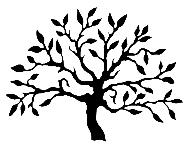

All rights © L’Olivier Neffiès 2020
The whole area was widely cultivated by the Romans and Sallèles and Mougères, some four km away, are generally accepted to have been the sites of villas.
Neffiès is mentioned in many charters, the earliest dating from 990 AD. The name derives from Occitan Nef Fies or neuf fiefs in French, ie the nine fiefs or land holdings which go to make up the community.
The nine fiefs were:
1. Fief de la Charité.
2. Fief de la Mazade.
3. Fief de la Chapelle St Blaise.
4. Fief de St Fulcrand.
5. The Fief de Lieu.
6. Owned by the Zignac family
7. Owned by the De Cessac family
8. St Estève
9. St Sarturnin
In 990 Guillaume, viscount of Béziers, ceded half of his fiefdom, including Neffiès, to the Abbé Saint-
The community was formally recognised in 1313 in an accord sealed by the consuls of Roujan with Bernard de Lauens and Guillaume de Rubas.
At the heart of the village was an impressive Chateau occupied, or at least owned by, the Seigneur. The village was walled and fortified, three reasonably well preserved towers remain as do two of the 3 original village gates, one is usable only by pedestrians, the other is a good cart width. A guard was maintained on a platform above one of the gates and paid for by the community. In the early 11th century adjacent to one gate there appears to have been a crusader chapel. There are well preserved sections of wall in the NW corner know as Buffo Ben or “battered by strong winds”.
The last Seigneur was Joseph Alban de Maurelhan de Polhis. He de-
The church tends to dominate the village and is dedicated to the British Martyr St Alban . The church was part of the diocese of Cabrières and responsible to the cathedral of St Aphrodite at Béziers. The fine clock was erected in 1681 by the clockmaker Serge Pharamond de Saint Pargoire and cost the enormous sum of 200 Livres. It has proved difficult to establish the exact date for the building of the church but based on the history of other local churches, such as that at Caux, it is likely to date from the mid 11th to early 12th century.
In terms of industry today, the area is dominated by wine and tourism. From the 4th to the early 19th centuries the Languedoc was known for its high quality wines but after the Phylloxera epidemic emphasis shifted to the “gros rouge” cheap thin red wine to slake the thirst of a growing work force. At its peak Languedoc produced over 33% of all French wine and was the largest wine growing area in the world. More recently there has been a marked shift back to higher quality vines with the low price of good “terroir” relative to Bordeaux or the Rhone valley encouraging lots of talented artisan wine-
Back in the 18th century coal production was also important to the village and two concessions are recorded. The proprietors of both were chased from their concessions during the French revolution. The coal was so called “Rock Coal” with a high content of schiste which made its combustibility rather poor. This may explain why, after 1789, the mines were intermittently and poorly exploited by their expropriators and eventually fell into disuse.
Coal played a further role with arrival of the railway in 1875. Lines connected Roujan-
The population of Neffiès has remained relatively stable for the last several hundred years, though in 1377 only 31 “fires” or hearths were recorded which probably implies a population of around 200. It quickly climbed to 600 or so and over the intervening 700 years there have been ups and downs but the last census estimated the population at around 1100. Passing the magical 1000 figure was very important and an extension to the school was completed in 2011 to cater for the expanding population. In 2017 the area around the church was completely re-
History of Neffiès
